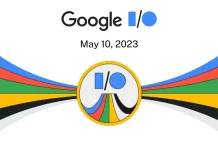Ideas are the cornerstone of success in practically every sector in the era of information. Even if you have the most brilliant concept in the world, your influence and effect will be significantly reduced if you can’t convince others to adopt it. And for this reason, among the world’s top business executives, communication is no longer seen as a “soft talent.” Successful leaders do more than just acknowledge the value of good communication. Instead, they research the art in all its manifestations — speaking, writing, and presenting — and work hard to hone their talents.
For instance, Jeff Bezos prioritized writing abilities while he was developing Amazon. He started his leadership team in 2004 by outlawing PowerPoint. He substituted “narratively constructed memos” for slides, which had titles and whole sentences with verbs and nouns.
Top leaders frequently employ the following strategies while speaking with their teams.
1. Use short words to talk about hard things

Written concepts might be difficult to grasp because of their length and complexity; these sentences also need more mental energy and focus. If you use shorter words and phrases instead of longer ones, you’ll gain more admirers.
Software programs like Grammarly rate the readability of a piece of writing to determine its quality. Writing samples are given a grade level based on the score. For instance, a document is deemed “extremely simple to understand” if it was created for a reader with at least an eighth-grade education, or the typical American teenager of 13 years old. It doesn’t mean that your work sounds like it was written by an eighth grader. It simply implies that your complex arguments are understandable, and concepts that are understandable are more convincing.
2. Choose sticky metaphors to reinforce key concepts
A metaphor is an effective technique for relating abstract topics to well-known ones. People can travel with metaphors while being seated. Metaphors are short cuts used in business to convey complicated information in succinct, memorable sentences.
Your audience will naturally look for something familiar to assist them make sense of an unfamiliar or abstract subject when you offer it. Introduce a fresh metaphor before they can respond.
3. Humanize data to create value

The key to making any data point interesting and lowering cognitive burden is to personalize it by putting the number in context. Showing them PowerPoint slides with graphs and data just adds to their cognitive load and depletes their mental stamina.
Make an additional effort to make statistics interesting, memorable, and ultimately compelling whenever you present them.
For instance, experts predict that by 2025, people will create 175 zettabytes, or one trillion gigabytes, of data each year. Simply said, most individuals find it impossible to comprehend such a large quantity. But what if I told you that 222 Earth rotations would be required for 175 zettabytes of data to fit on a single DVD? Even though the amount is still large, the description is more interesting because it conjures up a clear picture in your head.
Humanize the facts and make them pertinent to your audience to show the value of your proposition.
4. Make mission your mantra to align teams
A power outage in 1957 rendered most of Wisconsin and Minnesota without electricity. A medical equipment repairman named Earl Bakken noticed a chance to advance the industry while working in his garage. So, he created the first pacemaker that was battery-powered and continued to function even after the electricity was cut off. Bakken’s life now became about more than just making things right. He was on a mission to “alleviate pain, restore health, and extend life.”
More than 50 years after creating Medtronic, Bakken died in 2018. Since then, the firm has seen significant development. Its 90,000 people labor in 150 different countries, and two patients benefit from its medicines every second. Although a lot has changed, one thing hasn’t: the six words that motivated Bakken still guide Medtronic’s employees: alleviate pain, restore health, and extend life.
Bakken continuously kept the company’s objective in the spotlight as a “repeater in chief.”
Transformative leaders communicate excessively. They keep repeating the goal until it becomes a mantra. A mantra is a phrase or slogan that gains power as it is spoken repeatedly. Overcommunication amplifies the effect. You should put your purpose first. Highlight the mission of your business in all written and spoken communications, including marketing materials, presentations, memos, emails, and social media. Stand up for your mission if there is something it stands for.
Anything worthwhile requires a team, a collection of individuals committed to the passionate pursuit of a dream, and a shared vision. The most effective teams follow leaders because they are motivated to do so, but some teams follow leaders who are given influenced by their titles alone.
Stay tuned to Brandsynario for the latest news and updates.









































